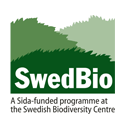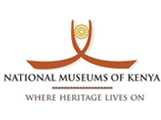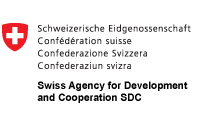A
The hindmost of the three main body divisions of an insect.
Small pad at apex of leg between pretarsal claws
longitudinal unbranched vein extending from base of insect wing to the outer margin below the cubitus vein
(pl., antennae). Pair of segmented appendages located on the head and usually sensory in function - the 'feelers'.
(sing., antennae). Segmented appendage located on the head and usually sensory in function - the 'feelers'.
C
A ridge or keel.
The pollen basket on the hind leg of many bees, formed by stout hairs on the borders of the tibia .
the curved spines or hooks on the prolegs of caterpillars
the fifth longitudinal vein of the insect wing, extending from the base and usually two-branched before reaching the outer margin
E
A species which lives in a society such that individuals of the species cooperate in caring for the young, which not all of them have produced; there is a reproductive division of labor, with more or less sterile individuals working on behalf of fecund individuals; and there is an overlap of at least two generations in life stages capable of contributing to colony labor, so that offspring assist parents during some period of their life.
F
The 3rd (counting out from the body) and often the largest segment of the insect leg.
G
(pl., glossae). One of a pair of lobes at the tip of the labium or lower lip: usually very small, but long in honey bees and bumble bees, in which the two glossae are used to suck up nectar.
(sing., glossa). Pair of lobes at the tip of the labium or lower lip: usually very small, but long in honey bees and bumble bees, in which the two glossae are used to suck up nectar.
H
I
The insect's outer coat.
L
The 'upper lip' of the insect mouth-parts: not a true appendage but a movable sclerite on the front of the head .
A thin, leaf-like flap or plate, the name being applied to the outgrowths of certain antennae .
(pl., larvae ).Name given to a young insect which is markedly different from the adult: caterpillars and fly maggots are good examples.
(sing., larva ).Name given to young insects which is markedly different from the adults: caterpillars and fly maggots are good examples.
M
Spotted or stained
The jaw of an insect. It may be sharply toothed and used for biting, as in grasshoppers and wasps, or it may be drawn out to form a slender needle as in mosquitoes. Mandibles are completely absent in most flies and lepidopterans.
The sclerite or sclerites making up the side wall of the mesothorax.
In the apocrita (which includes bee, wasps and ants), the mesosoma consists of the consists of the three thoracic segments and the first abdominal segment (the propodeum ).
The dorsal surface of the metathorax. It is often very small and its sub-divisions are usually obscured.
In the apocrita (which includes bee, wasps and ants), the metasoma consists of the second abdominal segment (which typically forms a petiole) and those segments posterior to it, and is often called the gaster rather than referring to it as the "abdomen "; in these insects.
O
(sing., ocellus). Simple eyes of insects, usually occurring in a group of three on the top of the head , although one or more may be absent from many insects.
(pl., ocelli). One of the simple eyes of insects, usually occurring in a group of three on the top of the head , although one or more may be absent from many insects.
P
small, flat, hardened area of skin from which one or more setae (hair-like extensions of the integument ) arise
the fleshy unjointed appendages on the abdomen of caterpillars that serve as legs. In adult insects, it refers to the anterior leg.
The 1st abdominal segment in the hymenopteran group known as the Apocrita (which includes bees, wasps and ants): it is completely fused with the thorax .
S
Any of the individual hardened plates which make up the exoskeleton.
The pollen-collecting apparatus of a bee, whether it be the pollen basket on the leg or a brush of hairs on the abdomen .
The 3rd of the major divisions of the dorsal surface of a thoracic segment: usually obvious only in the mesothorax.
slender, hair-like extensions on the surface (epidermis) of the insect body
on caterpillars, tergite of the terminal segment that bears the anus.
T
A small lobe or scale overlying the base of the forewing like a shoulder-pad.
The middle of the three major divisions of the insect body. The legs and wings (if present) are always attached to the thorax .
(sing., tibia) The forth leg segments (counting out from the body) between the femur and the tarsus.












